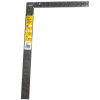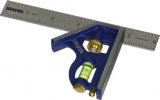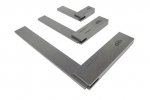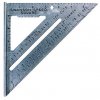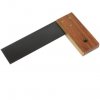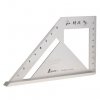Plastic framing square? Are you sure you don't mean a speed square? One of the triangle things? A framing square is a big "L". I have never seen a plastic one. Steel or aluminum.I really appreciate the perspectives here.
@tvrgeek the framing square I bought was plastic so I don't think it'll adjust itself
I'll keep an eye out for the brands listed here, the same ones seem to be coming up over and over, so that's good.
I feel like I need a masterclass *just in measuring*. (First lesson, don't forget the width of the saw blade!)
Thanks for all these great suggestions yall!
On precision. It matters if you are doing picture frames, cabinet face frames, doors, any good hand joinery. My dovetails improved tenfold when I switched from pencils to marking knives. A few thou across a drawer side matters. When I trim to fit with a plane or Lyon trimmer, I am trimming to a few thou. Too much precision never screwed up a project, but it can be slower and harder on the pocketbook.
I don't use scales on squares. Lines are too thick. So is that two and 1/32 to which side of the mark?
You can get sets of very good stainless rulers, inch or metric, off Amazon for chump change. Thin lines, good etching, not too thick for parallax errors. Scales on speed squares and framing squares are for cutting rafter tails, not cabinetry.
Yes, a huge amount of frustration comes from not having a class in marking. I was self taught until U-tube and gad did it cause me issues. I hope to take a class or so now I am retired. I am sure I have many more bad habits. One is measuring rather than marking from the mating piece.

